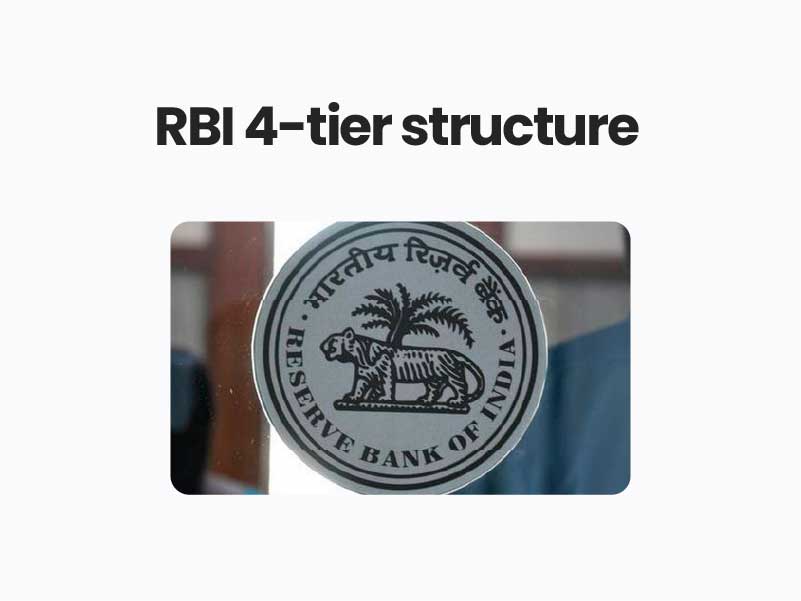Companion@360 → 7 Month programme to sharpen your writing skills → REGISTER NOW

RBI proposes 4-tier structure for tighter regulation of NBFCs
The Reserve Bank of India (RBI) has proposed a tighter regulatory framework for non-banking financial companies (NBFCs) by creating a four-tier structure with a progressive increase in intensity of regulation. In its discussion paper on revised regulatory framework for NBFCs, the RBI has said the regulatory and supervisory framework of NBFCs should be based on a four-layered structure: Base Layer, Middle Layer, Upper Layer and a possible Top Layer.
- It has also proposed classification of non-performing assets (NPAs) of base layer NBFCs from 180 days to 90 days overdue.
- NBFCs in lower layer will be known as NBFC-Base Layer (NBFC-BL). NBFCs in middle layer will be known as NBFC-Middle Layer (NBFC-ML).
- An NBFC in the Upper Layer will be known as NBFC-Upper Layer (NBFC-UL) and will invite a new regulatory superstructure. There is also a Top Layer, ideally supposed to be empty.
- Once an NBFC is identified as NBFC-UL, it will be subject to enhanced regulatory requirement at least for four years from its last appearance in the category, even where it does not meet the parametric criteria in the subsequent year.
- “Hence, if an identified NBFC-UL does not meet the criteria for classification for four consecutive years, it will move out of the enhanced regulatory framework,”.
- The NBFC sector has seen tremendous growth in recent years. In last five years alone, size of balance sheet of NBFCs (including HFCs) has more than doubled from Rs 20.72 lakh crore (2015) to Rs 49.22 lakh crore (2020).
BASE LAYER:
If the framework is visualised as a pyramid, the bottom of the pyramid, where least regulatory intervention is warranted, can consist of NBFCs, currently classified as non-systemically important NBFCs (NBFC-ND), NBFCP2P lending platforms, NBFCAA, NOFHC and Type I NBFCs.
MIDDLE LAYER:
- As one moves up, the next layer can consist of NBFCs currently classified as systemically important NBFCs (NBFC-ND-SI), deposit taking NBFCs (NBFC-D), housing finance companies, IFCs, IDFs, SPDs and core investment companies.
- The regulatory regime for this layer will be stricter compared to the base layer. Adverse regulatory arbitrage vis-à-vis banks can be addressed for NBFCs falling in this layer in order to reduce systemic risk spill-overs, where required, the RBI said.
UPPER LAYER:
- Going further, the next layer can consist of NBFCs which are identified as systemically significant among.
- This layer will be populated by NBFCs which have large potential of systemic spill-over of risks and have the ability to impact financial stability.
- There is no parallel for this layer at present, as this will be a new layer for regulation. The regulatory framework for NBFCs falling in this layer will be bank-like, albeit with suitable and appropriate modifications.
TOP LAYER:
- It is possible that considered supervisory judgment might push some NBFCs from out of the upper layer of the systemically significant NBFCs for higher regulation/supervision.
- These NBFCs will occupy the top of the upper layer as a distinct set. Ideally, this top layer of the pyramid will remain empty unless supervisors take a view on specific NBFCs.
- In other words, if certain NBFCs lying in the upper layer are seen to pose extreme risks as per supervisory judgement, they can be put to higher and bespoke regulatory/supervisory requirements.
- In view of the recent stress in the sector, it has become imperative to re-examine the suitability of this regulatory approach, especially when failure of an extremely large NBFC can precipitate systemic risks, the RBI paper said.
- The regulatory framework for NBFCs needs to be reoriented to keep pace with changing realities in the financial sector.
Read Also Allowing Corporates to own Bank
